Natural cosmetics
Dr Anna Mandozzi's ultimate guide to medicinal mushrooms
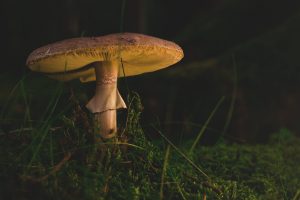
Mar
Chaga, reishi and co.: All about medicinal mushrooms
Vital mushrooms are the "new" superfood: Reishi, Cordyceps, Lion's Mane, Chaga, Polyporus, Shiitake, Maitake - they are all characterised by their special and health-promoting properties. As a powder or extract they can be used for the treatment of ailments, but also for the treatment of chronic and acute illnesses.
There is now also a wide range of adaptogenic (luxury) foods containing medicinal mushrooms from suppliers such as Four Sigmatic or Moon Juice. And of course there are also pure mushrooms in powder and capsule form. Medical research into the effects of these ingenious mushrooms is still in its infancy in Central Europe. Unlike in Asia, for example, medicinal mushrooms are therefore relatively unknown to many people in Europe. However, mycotherapy - the name given to medical treatment using medicinal mushrooms - can often be an effective alternative or supplement to conventional therapy. This medicinal mushroom guide provides an initial orientation and an overview of the most important medicinal mushrooms.
Table of contents
- What are medicinal mushrooms?
- Where does the tradition of medicinal mushrooms come from?
- What are medicinal mushrooms used for?
- How do you choose the right mushroom preparation?
- An overview of the best-known medicinal mushrooms
- FAQ - Frequently asked questions about medicinal mushrooms
- Sources
What are medicinal mushrooms?
Mushrooms - including the smaller group of medicinal mushrooms - are among the most exciting creatures in the world. Throughout human history, mushrooms have always been both feared and coveted. On the one hand, they can be dangerous to humans as producers of poison. On the other hand, they are essential and a model for the production of vital medicines such as the antibiotic penicillin or are consumed as a nutrient-rich food. Furthermore, 80 to 90 % of the plants that are so vital for us could not grow without fungi!
Medicinal mushrooms are a narrowly defined group within the mushroom family.
Vital mushrooms:
- are non-toxic and therefore edible. Overdosing is not possible.
- do not cause a habituation effect in the body
- strengthen the immune system
- have an antioxidant effect
- have no side effects
- regulate the fat metabolism
- have a particularly high nutrient density
- have an adaptogenic effect
- have an antitumour effect
- are among the oldest and best-studied natural remedies in the world.
It is important to know that there are more studies on mushrooms than on plants!
It is assumed that fungi have been around for between 1800 and 2000 million years. Together with bacteria, they are among the oldest living organisms on earth. Originally they lived in the sea and at some point gained a foothold on land. There they finally enabled plant life and subsequently human life.
Incidentally, fungi are much closer relatives of us humans than plants are. For example, we share around 30 % of the same basic DNA parcels with the yeast fungus. This is why fungi work so well and often better than plants in humans. Fungi can even change or repair DNA!
Mushrooms are not human, animal or plant, but their own category. And because of their close proximity to animals, mycologists classify medicinal mushrooms as non-vegan!
As a foodstuff, the mushroom has the mushroom has proven to be particularly nutritious. Nutrition experts advise to include them in your diet at least twice a week. Medicinal mushrooms or medicinal mushrooms are types of mushroom that contain numerous highly effective ingredients. They are also low in calories and well tolerated. They are considered to be the oldest natural remedies and have been used in Asia have been used for thousands of years in Asia to treat various ailments, but are also served also served as food. Vital mushrooms help to set the body's own regulatory regulatory processes in the body.
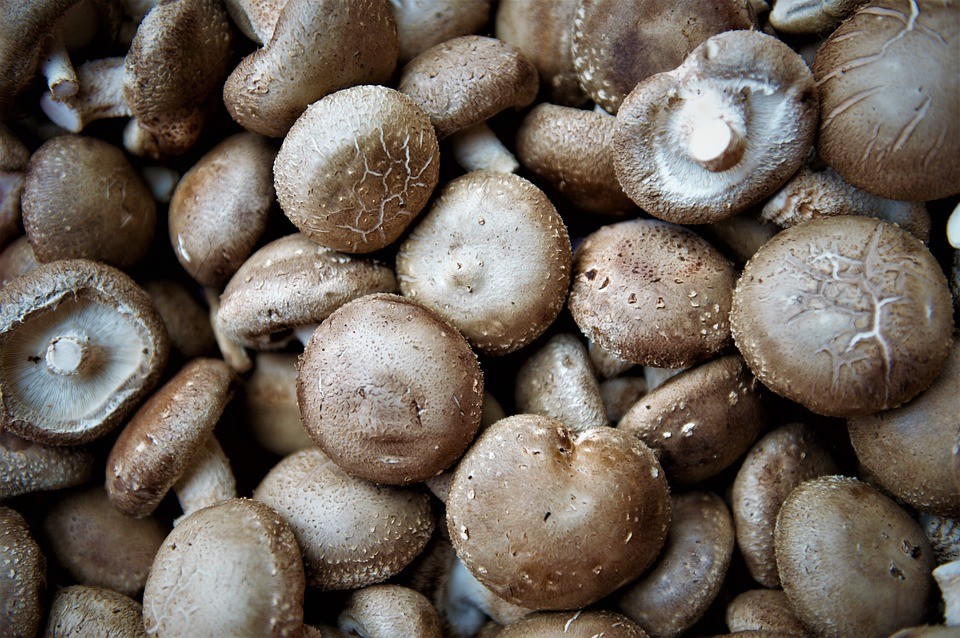
Where does the tradition of medicinal mushrooms?
Whilst in Traditional Chinese Medicine (TCM), medicinal mushrooms have been part of the standard repertoire for thousands of years. repertoire for thousands of years, mycotherapy is still in its infancy in Europe. infancy. Things were different in the days of Ancient Rome. Porcini mushrooms, truffles and imperial mushrooms were considered particularly exquisite delicacies, reserved only for the nobility. reserved for the nobility.
However, mushrooms in Central Europe later fell into disrepute due to symptoms of poisoning. One problem was that mushrooms could not simply be cultivated. This made it difficult for the monasteries to advance the study of mushrooms and they focussed focussed on herbal medicine. As a result, the traditional knowledge of which Hildegard von Bingen, for example, still practised, was gradually forgotten. forgotten.
In the East, however, the knowledge of the healing power of mushrooms is still firmly anchored in folk knowledge and also in practised medicine. Shiitake, for example, has been cultivated there for over cultivated there for over 1000 years. In 1974, the first international mycology congress in Tokyo. There, researchers discovered an active ingredient contained in shiitake active ingredient contained in shiitake, namely lentinan, as a potent anti-cancer drug. This This reawakened the interest of the West, and medicinal mushrooms have have been attracting more and more attention in Europe since then.
What are medicinal mushrooms used for?
Vital mushrooms are particularly can be used extensively, from minor ailments or discomfort to serious and chronic and chronic diseases. Vitality mushrooms have received particular attention in the treatment of various cancers. In this context, there are scientific studies that show that certain medicinal mushrooms can inhibit tumour growth. Some of their ingredients can even be found in many medicines that are prescribed by prescribed by conventional doctors as part of cancer therapies. Positive effects mycotherapy also shows positive effects in the treatment of the side effects of chemotherapy chemotherapy and in post-treatment.
Other popular Other popular areas of application for medicinal mushrooms include chronic nervous disorders, disorders of the immune system, sleep disorders, Hashimoto's, arthrosis, hair loss, diabetes, migraines or acne, skin problems, stress disorders and much more. In addition medicinal mushrooms can be used, for example, for intestinal cleansing or mental diseases. If you look at the incredibly broad field of application of medicinal mushrooms, there is almost no area in which they cannot be used! they cannot be used!
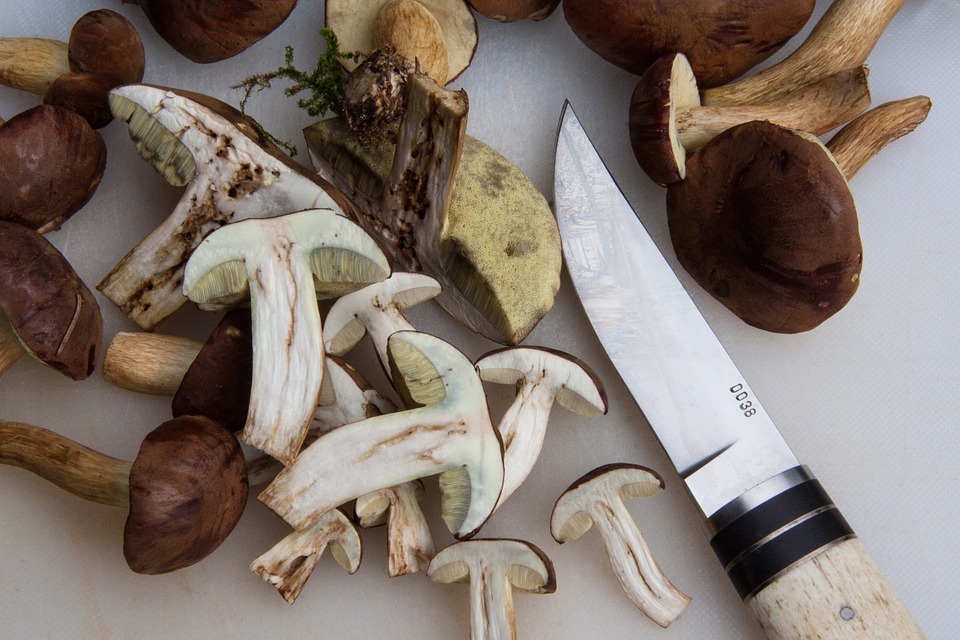
How do you choose the right mushroom preparation?
Here it depends on these criteria:
- Is the supplier/manufacturer certified and tested and provides the necessary certificates on request?
- Does the mushroom preparation contain a high polysaccharide content?
- Is the price serious? Cheap mushroom preparations should very carefully, because the cultivation and processing of medicinal mushrooms is medicinal mushrooms is complex and therefore expensive. Attention, this does not mean that an expensive price is a guarantee!
- Is the product itself certified organic?
The last point is particularly important, as fungi absorb and accumulate heavy metals, radioactivity, etc., which can then enter our bodies.
An overview of the best-known medicinal mushrooms
Reishi
The reishi (Ganoderma lucidum, Ling Zhi, shiny mushroom) is an all-rounder that is also known as the king of mushrooms. Reishi is used for all kinds of ailments. It usually grows on deciduous trees (mostly trees) and, unlike some other medicinal mushrooms, is not an edible mushroom. edible mushroom. Nevertheless, there are numerous teas and even syrups, chocolate, drinks and much more with Reishi. Also basically in terms of the area of application reishi is a mushroom that is almost always suitable.
- Effective active ingredients: over 100 highly effective polysaccharides, which contribute significantly to strengthening the immune system, and over 140 antibacterial triterpenes 1,2
- Can be used to treat numerous diseases such as cancer, hepatitis, bronchitis, neurodermatitis, immunodeficiency, high blood pressure, asthma, allergies, sleep disorders, ADHD and inner restlessness 3
- Also known as Mushroom of eternal lifeas it is said to give new vitality to seriously ill people in particular - and is therefore often used as an "anti-ageing" mushroom. 4
- Calming and balancing effect 5
- Promotion of cognitive skills 6
- Increase in oxygen saturation in the muscles and blood 7
- In practice, reishi is used, among other things, for
- Cardiovascular system, including blood pressure regulation
- Sleep problems and disorders
- Strengthening the immune system
- Accompanying cancer therapy
- States of exhaustion, burn-out
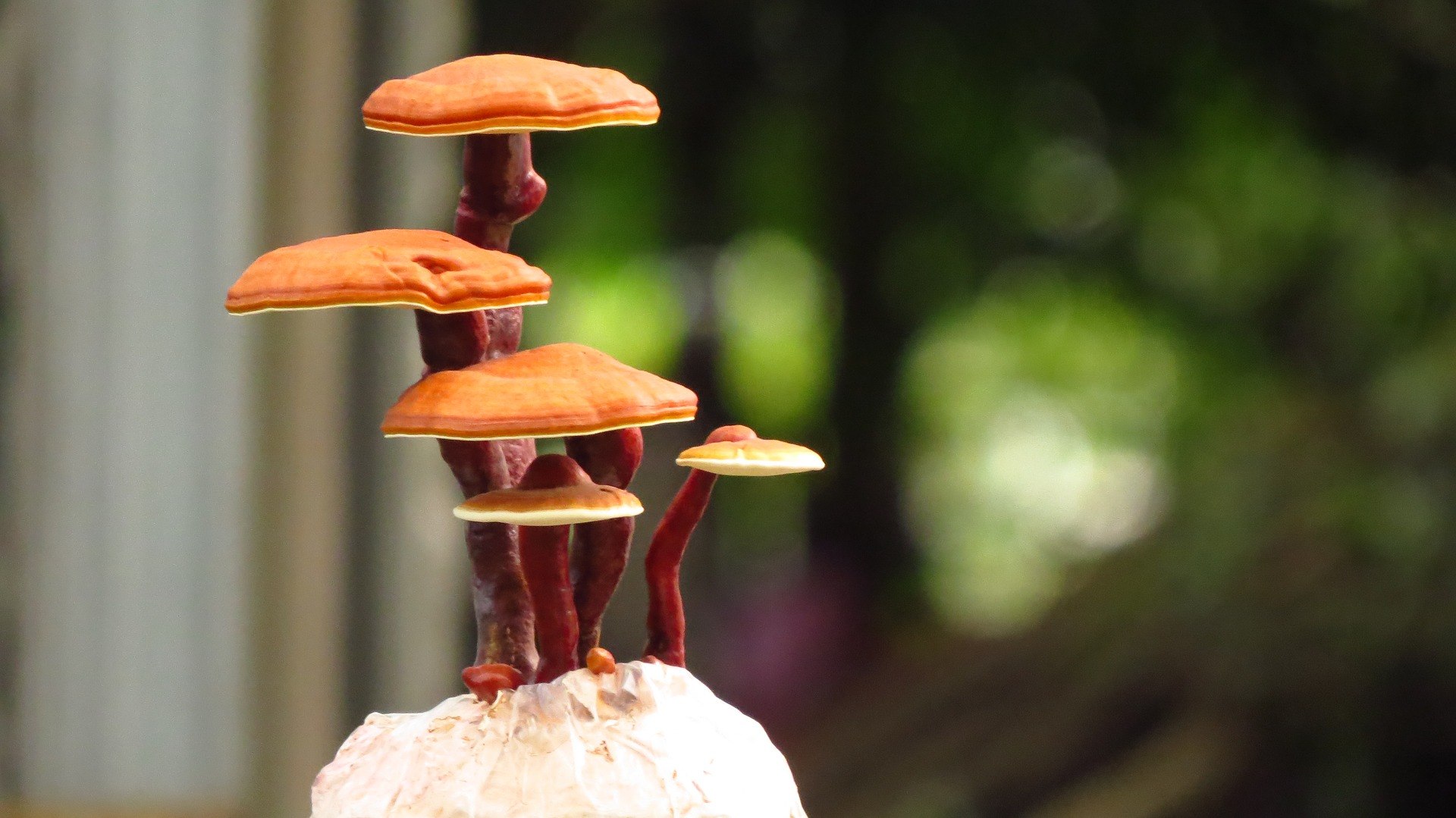
Cordyceps
The so-called Cordyceps sinensis has many names, but most people are familiar with it under the known as the caterpillar fungus, Tibetan caterpillar fungus or Ophiocordyceps sinensis. The reason for this is that this parasitic tube fungus infects butterfly caterpillars and uses them as a growth substrate. For ethical and ethical and hygienic reasons, attempts are now being made to cultivate cordyceps in other ways. in a different way.
- Scientifically proven relief of symptoms for cancer, diabetes, liver damage, cardiovascular diseases, rheumatoid arthritis arthritis and diseases of the kidneys and lungs
- Increasing physical performance and endurance
- Strengthening the immune system
- increase Libido enhancer, aphrodisiac and for sexual dysfunction
- Mood-enhancing,
- Regulation of heart and lung functions
- Muscle regeneration
- Strengthening the entire organism after serious illnesses and after radiotherapy or chemotherapy
- For unfulfilled desire to have children for men and women applicable
- Contraindications: Do not use in the case of hormonal cancer and in case of high fever!
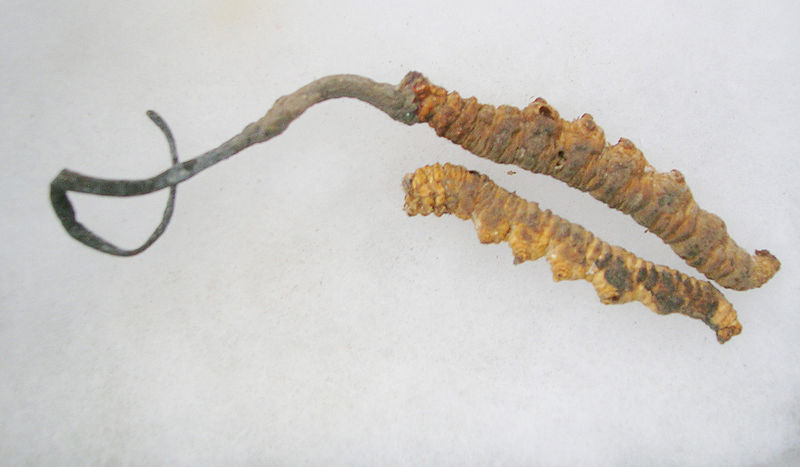
Lions's Mane - Hericium
Lion's Mane is often often referred to as Hericium, Lion's Mane, Monkey's Head Mushroom or hedgehog spiny beard. In Asia, this medicinal mushroom, which looks like a long white beard, has been known for thousands of years due to its unique medicinal properties have been known for thousands of years. Since the 1950s, it has been cultivated in Shanghai and other Chinese regions since the 1950s.
- Edible and medicinal mushroom, which is used in TCM primarily to for supporting the intestines and liver, as well as for stomach and intestinal problems
- Powerful active ingredients: all eight amino acids essential for essential amino acids as well as numerous polysaccharides and polypeptides are polypeptides are included
- Relief of complaints with gastrointestinal diseases, cholesterol and lipometabolic disorders, nervous disorders and disorders of the immune system
- Preventive effect against tumour diseases, especially stomach, intestinal, oesophageal and skin cancer
- Improvement of mental well-being with mood disorders during the menopause, stress, sleep disorders or restlessness restlessness
- No known side effects
- Accompanying treatment for nerve diseases
- Calming for anxiety, inner restlessness and sleep disorders
- Modulation of the immune system
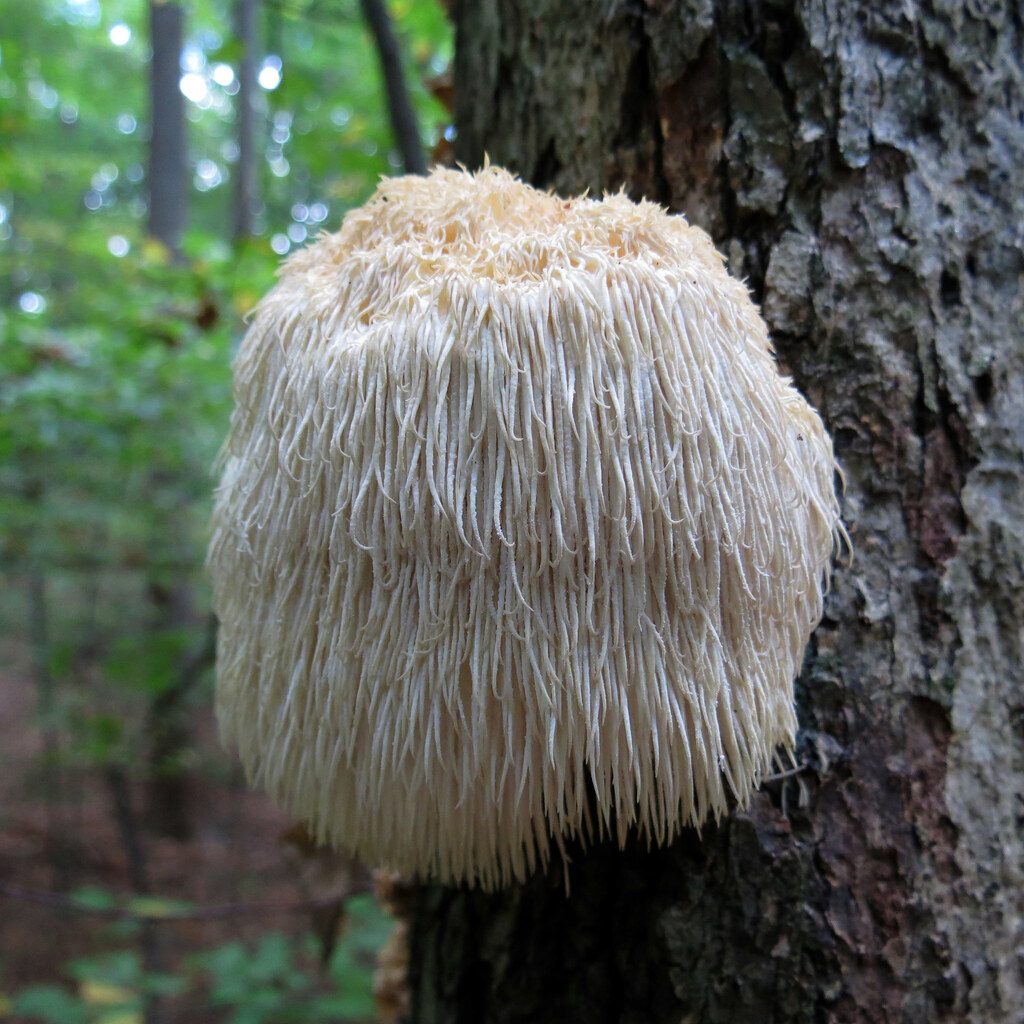
Chaga
Chaga (the leaning
mushroom) has been known as a medicinal mushroom in East Slavic folk medicine since the
known as a medicinal mushroom since the Middle Ages. As a parasite, it usually grows for over ten
years on birches and other trees, preferably in Scandinavia and Siberia.
Visually, it resembles dark-coloured tree bark. Traditionally, the
Chaga tubers were traditionally drunk as a hot water extract.
The latest research shows
that chaga is one of the most powerful antioxidant substances of all.
- Rich in rare trace elements, vitamins, enzymes, polyphenols and triterpenes
- One of the most powerful antioxidants
- Anti-cancer and cell-protective effect has been confirmed in laboratory tests, which is why it is used preventive and adjuvant use (e.g. melanoma, brain tumours)
- Alleviation of side effects in the course of chemotherapy
- Use as a general tonic
- Immunodeficiency
- Ideal medicinal mushroom for treating and protecting the skin skin, which supports the healing of wounds, burns or inflammations, also e.g. for psoriasis
- Mood-lifting effect without uplifting
- Inflammatory gastrointestinal diseases Chronic gastritis, ulcer, ulcerative colitis, Crohn's disease, leaky gut
- Antiviral (e.g. herpes simplex, hepatitis)
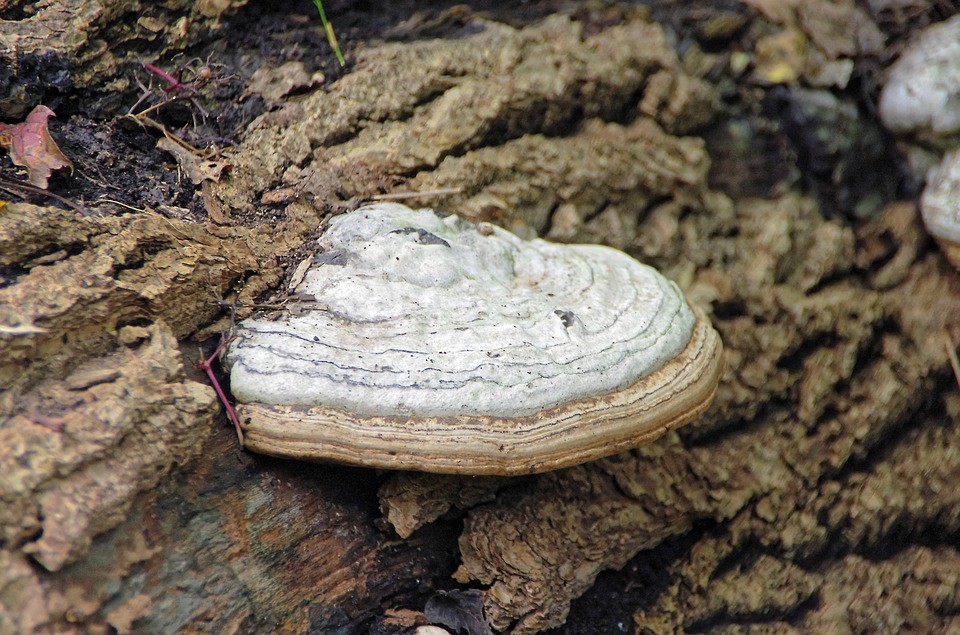
Agaricus Blazei Murril (ABM)
Agaricus is an edible mushroom that is closely related to the button mushroom and is mainly native to the Brazilian rainforest. This medicinal mushroom is particularly known for its impressive anti-cancer effect. It can be used preventively or as an adjunct to the treatment of tumours. In addition, it not only strengthens the body's own defences and stabilises the immune system, but also supports the skin.
- Use for skin problems and skin diseases (acne, psoriasis, neurodermatitis etc)
- Regulation of blood pressure and fat metabolism
- Treatment of allergies
- Improvement of intestinal functions
- Support for inflammation
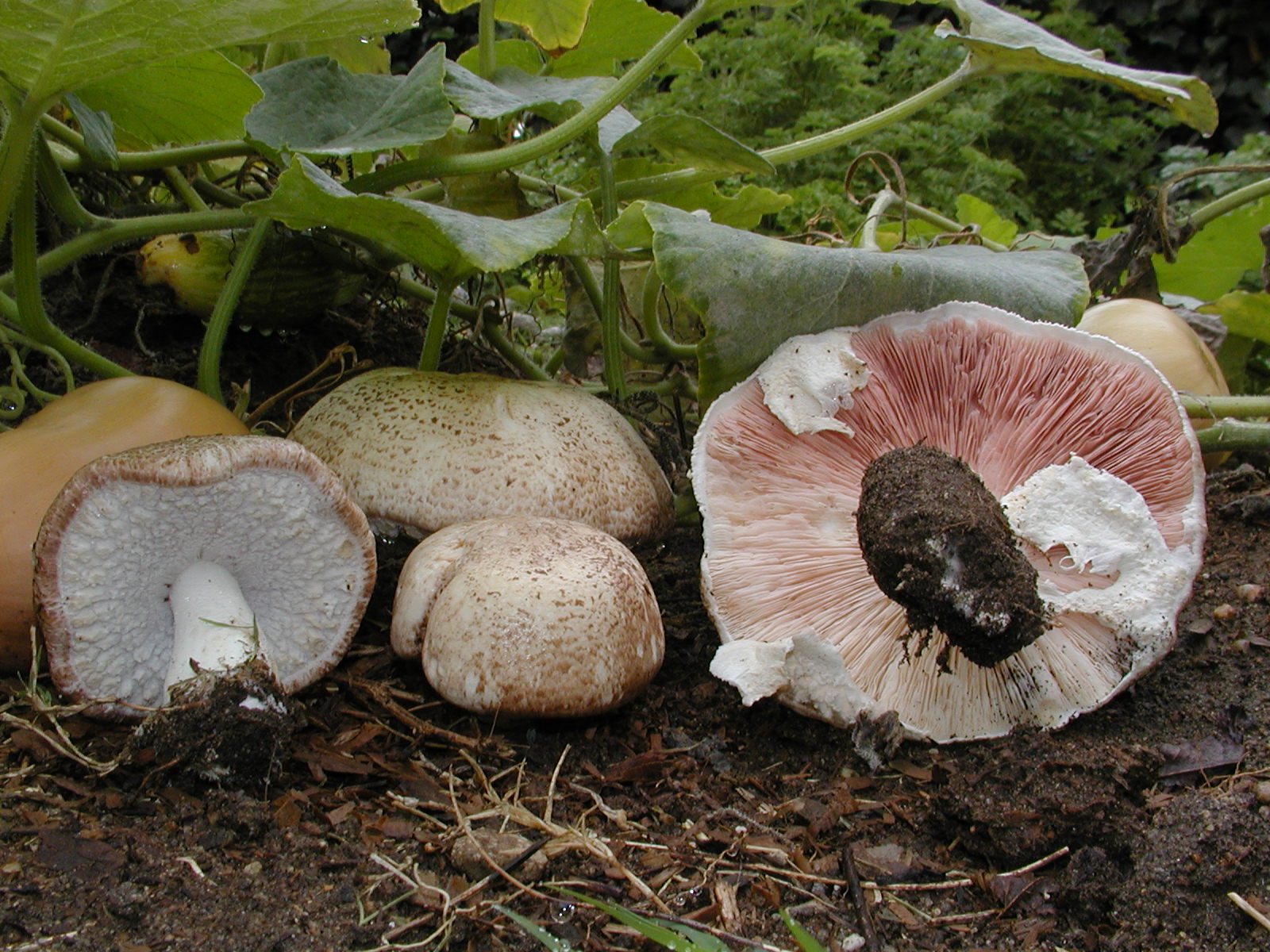
Polyporus Umbellatus
Polyporus umbellatus, also known as oak hare, has been used as a natural antibiotic for over has been used as a natural antibiotic for over 1000 years and is a fixed in TCM. This edible mushroom, which is not particularly edible, is native to the temperate climate zones of Europe and Asia. Due to some of its active ingredients it has made a name for itself as an effective remedy for hair loss. hair loss. It also strengthens the skin structure, regulates blood pressure and and promotes drainage. Ötzi had a polyporus with him with him!
- Promotes lymph flow and drainage
- Improves skin & hair
- Regulates blood pressure and the immune system
- Used in cancer prevention and treatment used
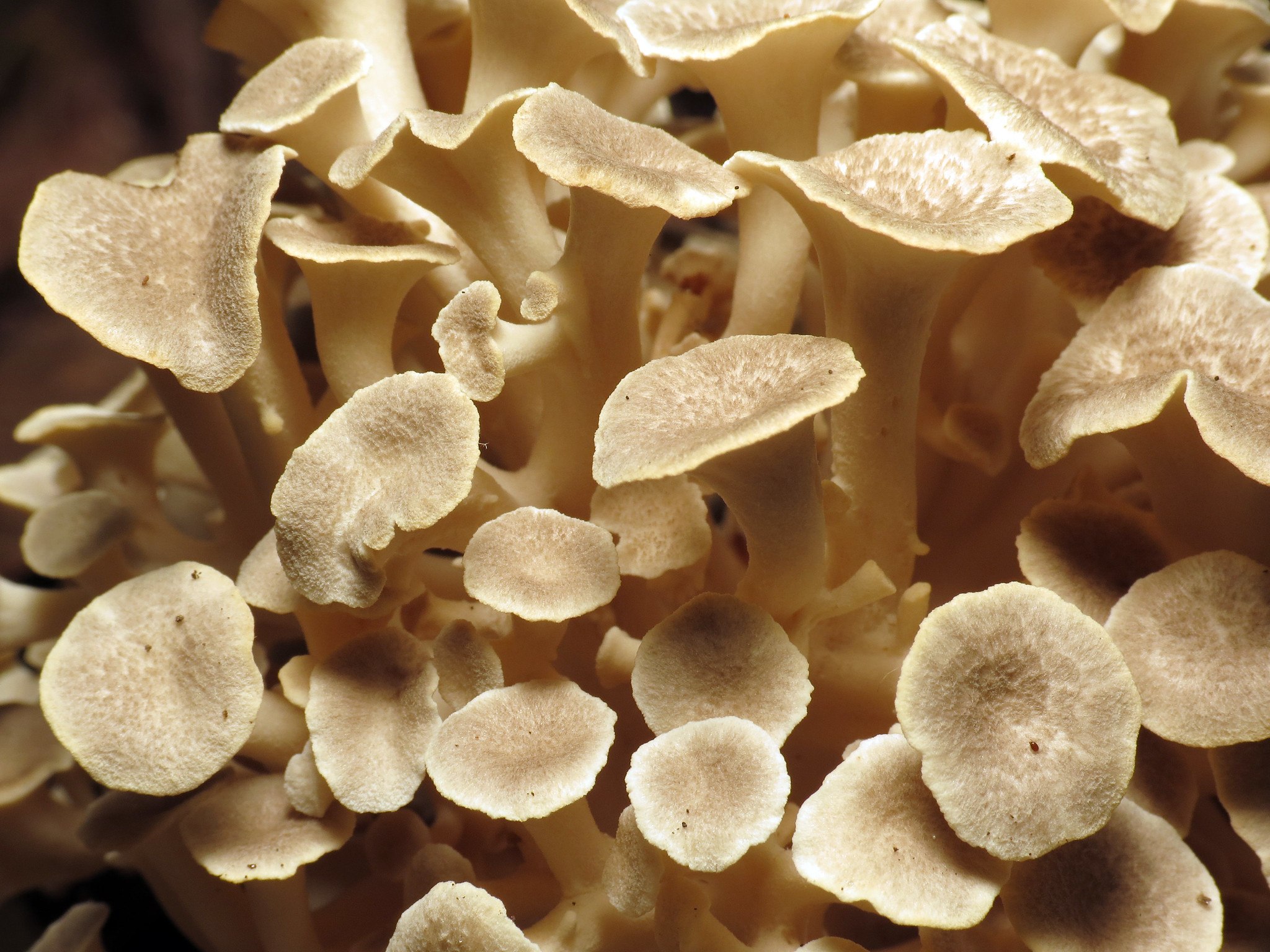
Maitake
Maitake (Grifola frondosa) grows wild in the forests of East Asia, North America and Europe and has also been cultivated as an edible mushroom since the 1980s. cultivated as an edible mushroom. Due to the polysaccharides it contains, it is considered a strong antioxidant and has an anti-diabetic effect. Like many medicinal mushrooms, the maitake is suitable for the prevention and accompanying treatment of various cancer diseases. It can also be used to reduce obesity and to treat osteoporosis. In rare cases, however, allergic reactions are reactions are possible. Maitake is said to have these effects:
- Regulation of weight, blood sugar and blood pressure
- Strengthens the immune system
- Use as a preventive agent and also in the treatment of various types of cancer. types of cancer and during chemotherapy and radiotherapy
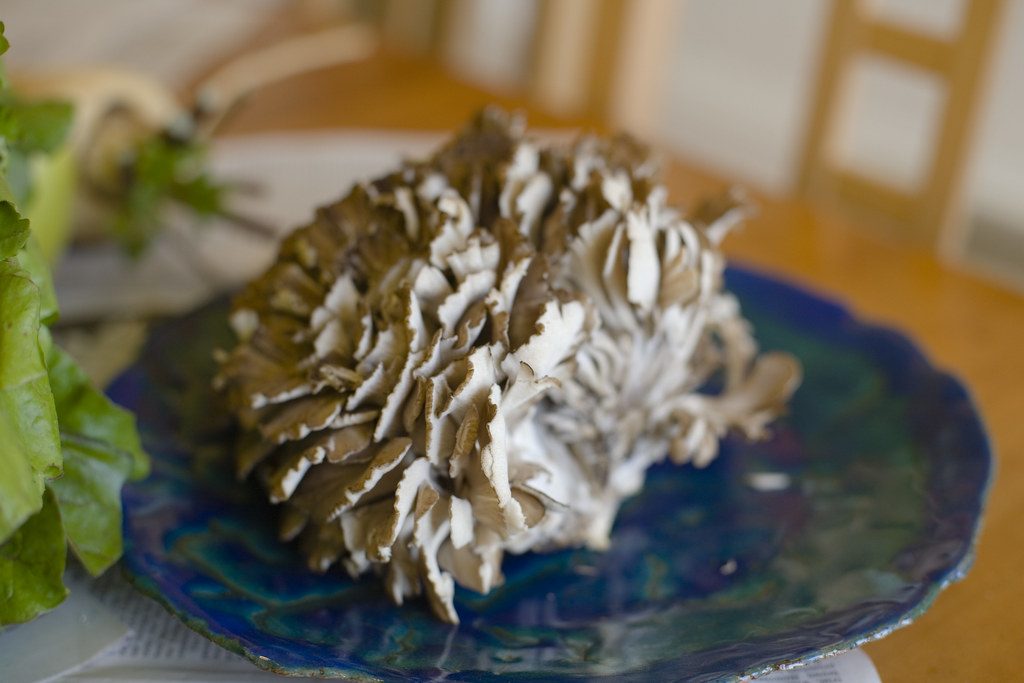
Shiitake
Shiitake (Lentinula edodes) has been recognised in TCM for over 2000 years as a King of the mushrooms known. As already mentioned, even conventional medicine is now interested in the ingredient lentinan it contains. This is regarded as a so-called "biological response modifier" and has proven itself in the past in the treatment of various tumour diseases. It also strengthens the immune system and helps the body to overcome bacterial or viral infections.
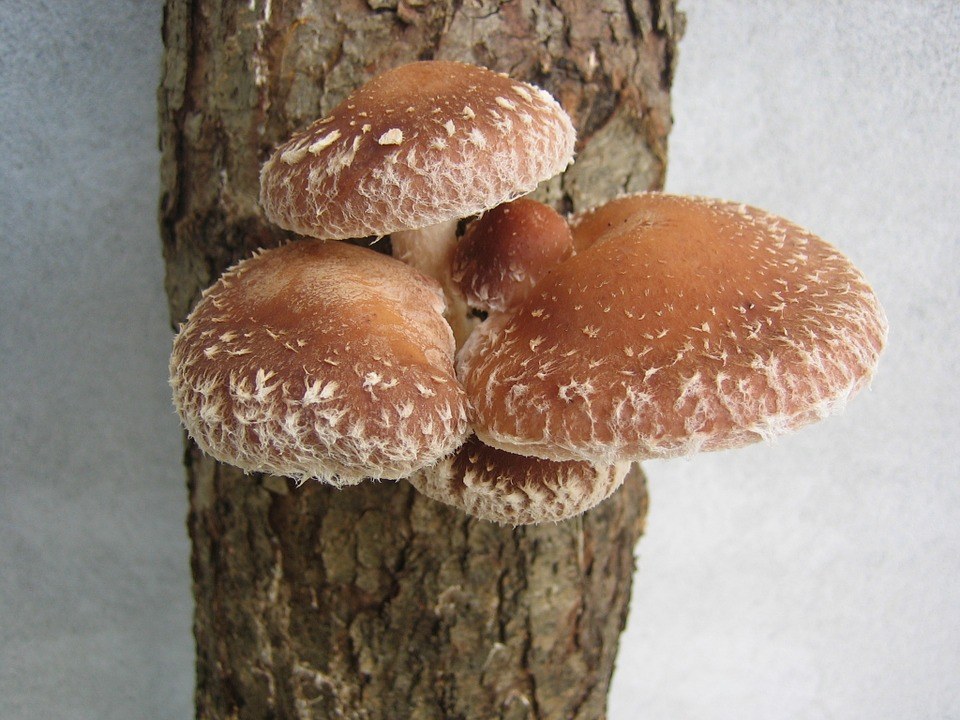
Auricularia
Auricularia (Mu-Err) has the the shape of a human ear and is therefore also known in German as Judasohr in German. This medicinal mushroom is rich in iron, magnesium, potassium, phosphorus, silicon and vitamins. In the Asian region, the Judas ear is often used as a often used as an edible mushroom due to its high nutrient content. It is often found medicinal mushroom is often used in the treatment of blood blood clotting disorders or disorders of the cardiovascular system. application. It also supports the body's own defences and strengthens the skin. Auricularia is also used in practice in this way:
- Strengthening the immune system
- For skin and eye diseases
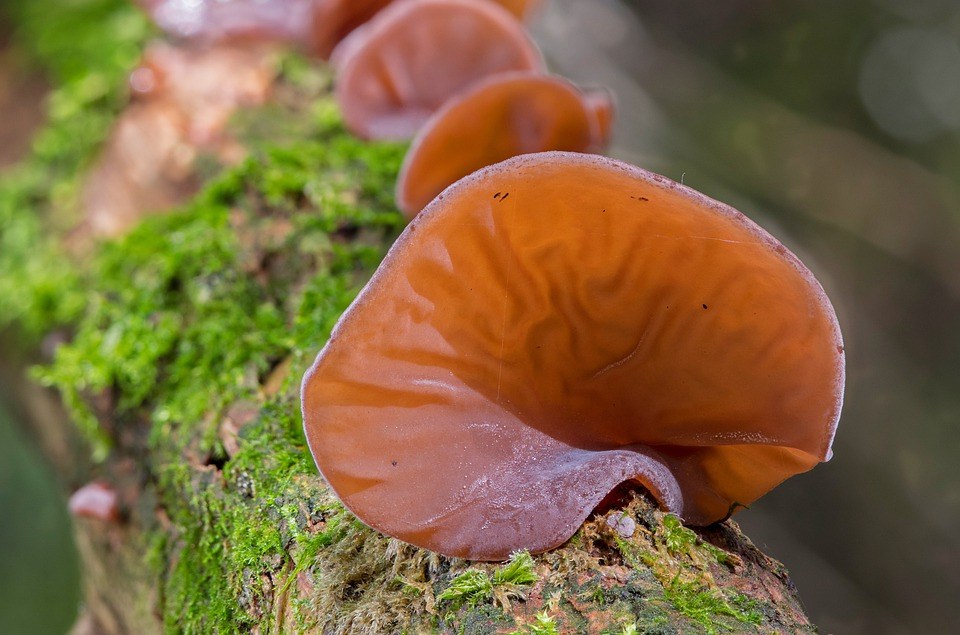
FAQ - Frequently asked questions about medicinal mushrooms
How quickly do medicinal mushrooms work?
Depending on the dosage and preparation, some forms can take effect very quickly (15-20 minutes), or in the case of mycotherapy within a few days or up to 4-6 weeks in the case of chronic illnesses.
A therapy lasts 3 - 6 months, and only after this time do the medicinal mushrooms develop their full effect.
What should I look out for when buying medicinal mushrooms?
The quality of medicinal mushrooms is particularly important. An experienced mycotherapist is well versed and can recommend preparations. Certification of the manufacturer itself is relevant manufacturer itself and certification of the organic cultivation of the mushroom, or that the mushrooms come from wild collection. The high polysaccharide content of 20-30% is also a quality feature.
Can I give my baby or child medicinal mushrooms?
Yes, medicinal mushrooms are even suitable from infancy! Medicinal mushrooms are particularly often used for skin conditions such as neurodermatitis. It is advisable to increase the dose slowly in order to acclimatise the digestive system to the mushrooms.
Can you combine several mushrooms?
Yes, and this is even ideal, as the effect of the P